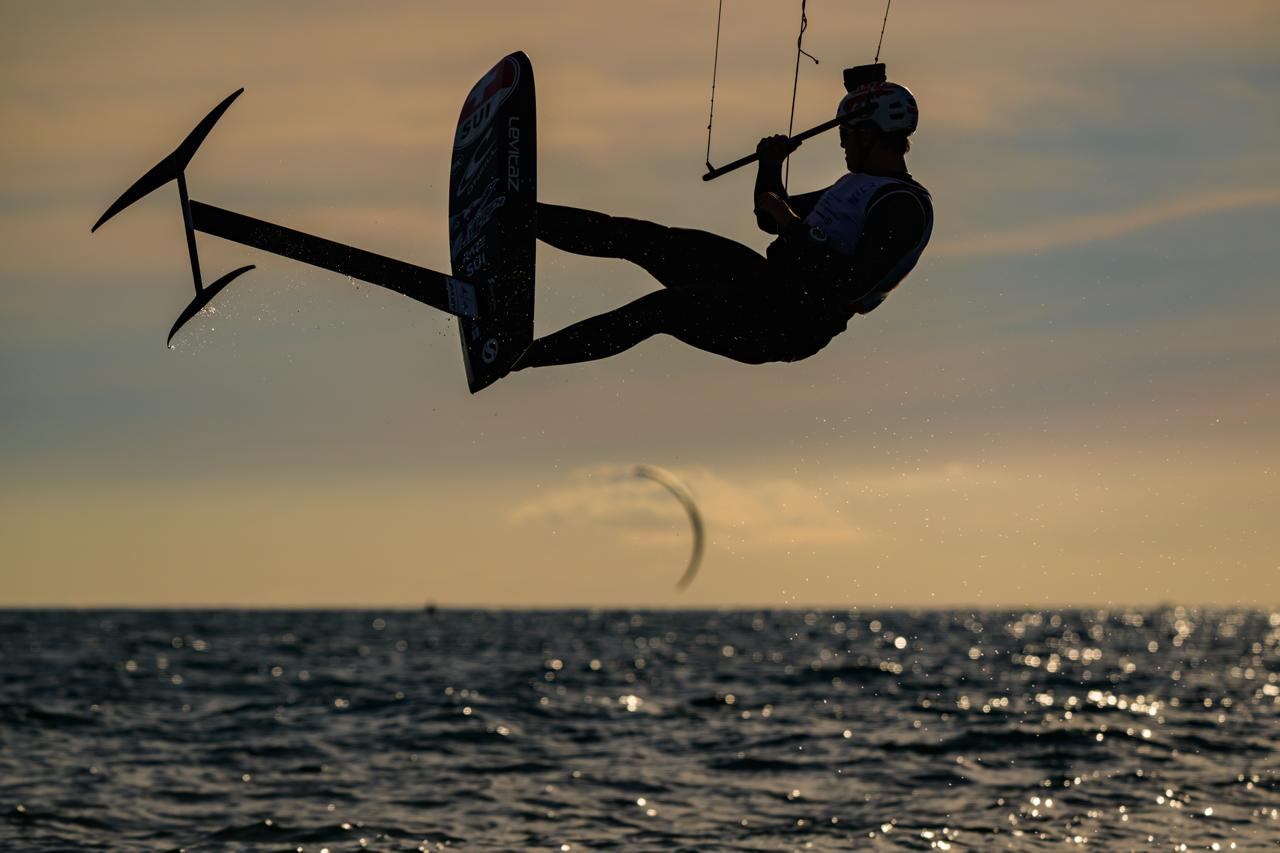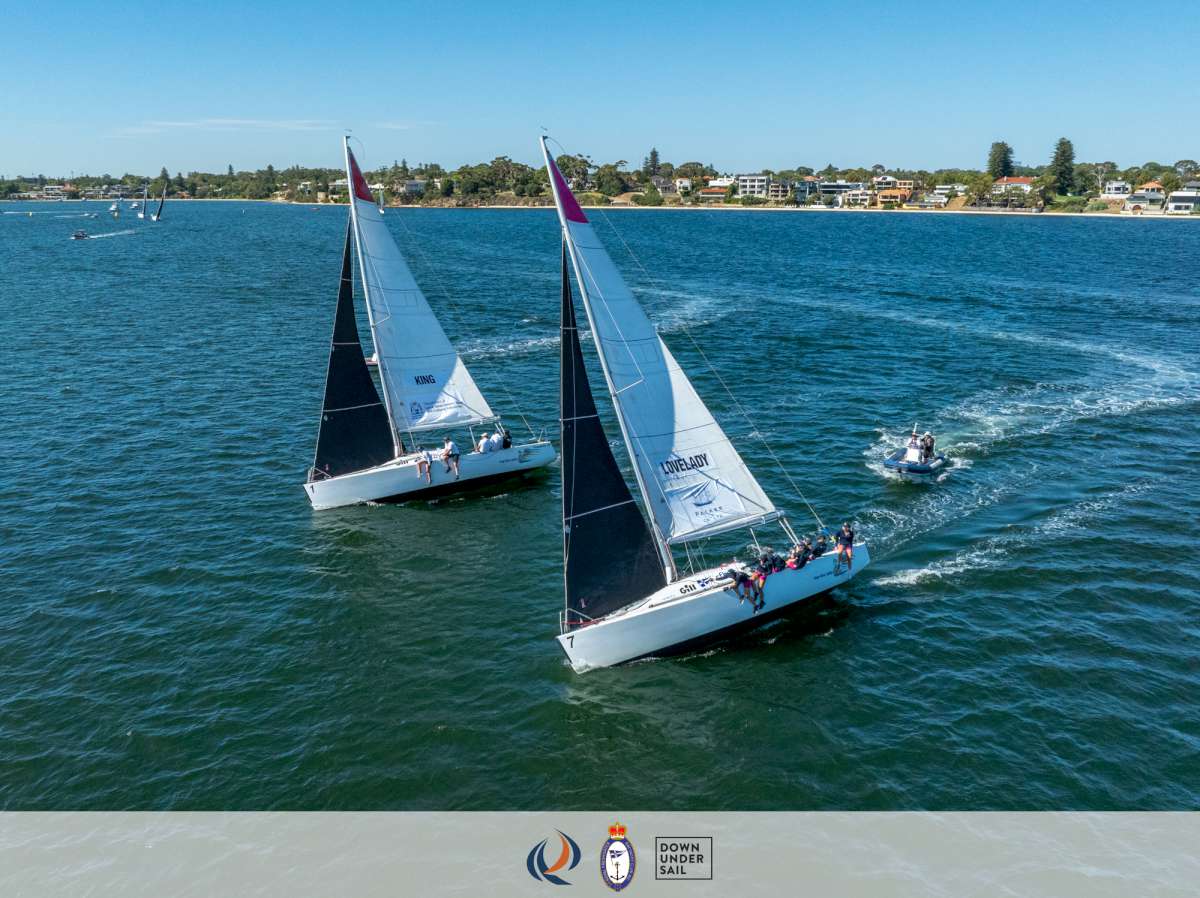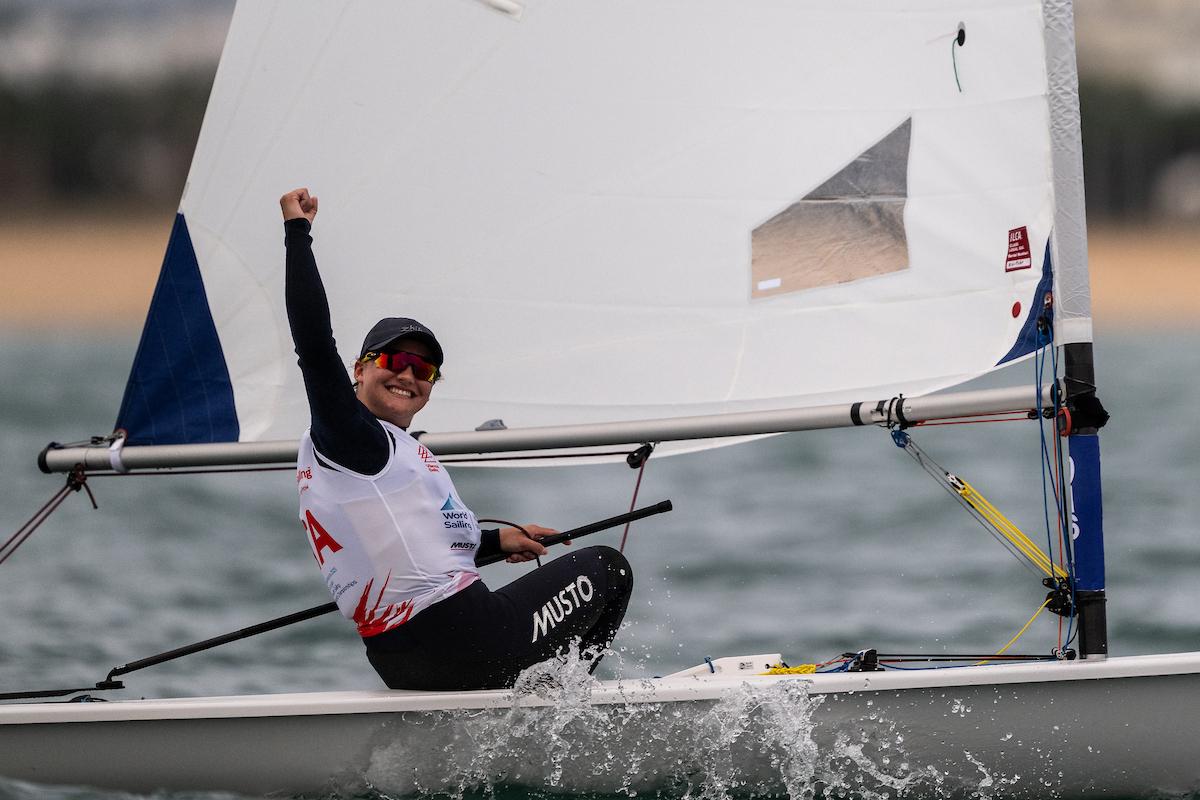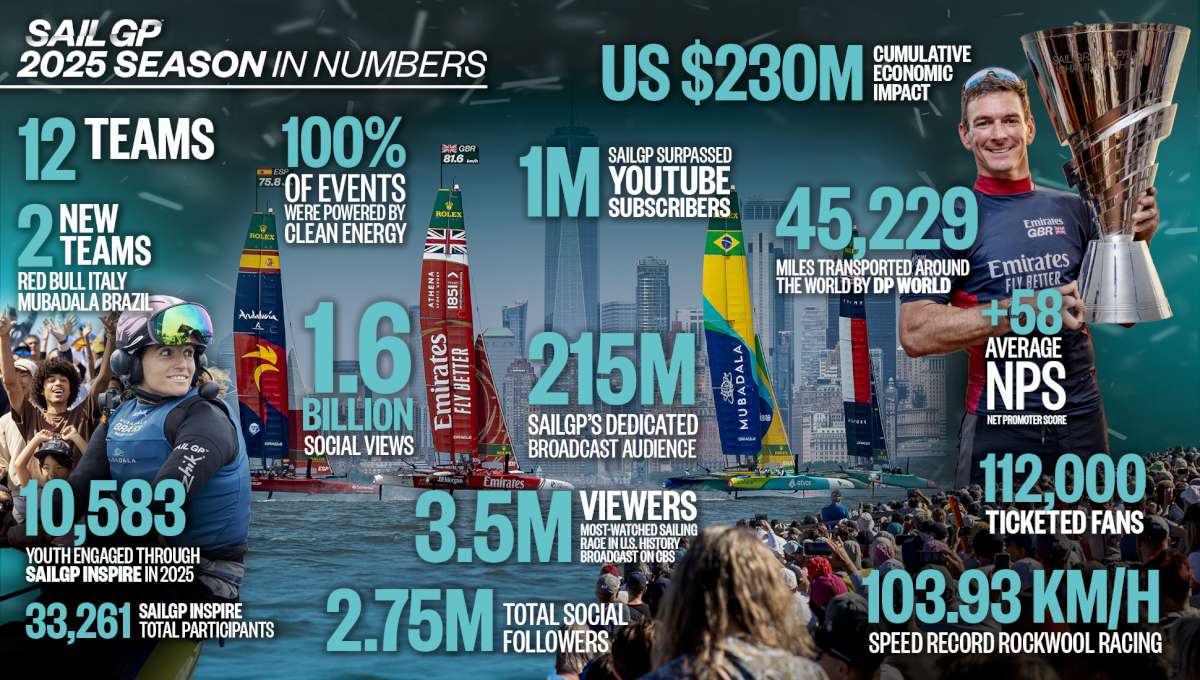Focus on the multihull
When it comes to buying a multihull some unique factors have to be considered, reports Jo Djubal.
Anybody who has purchased a boat of any size or design can attest to the research needed to ensure your choice meets your needs and expectations. Buying a multihull today presents sifting through a mind-boggling array of build materials and designs. Research is imperative, and to make a truly informed decision you need to carefully study the current market. You also need to draw up a list of sought-after attributes.
Honest assessment
As one of Australia's few multihull specialist surveyors, Paul Slivka has surveyed nearly one thousand multihulls. He recommends a totally honest assessment of the boat's purpose.
“One can then focus on the correct boat and not waste money purchasing a dream instead of a reality. For example, my experience has been that one in five people who tell me they are buying the boat for bluewater cruising ever actually goes bluewater cruising.
“My advice is to start small and use the stepping-stone principle. Also do lots of research. Before you get to survey point, you should be 95-percent sure of your choice. Be cold, hard and realistic and don't become too starry-eyed until you have made a well researched business transaction.”
The director of Australia's longest-running multihull specialist brokerage, Phil Day, agrees.
“Honesty regarding your intentions is a key factor. What do you really want to do? Where do you really want to go?
Checklist
Phil Day believes making a checklist can be a huge help.
“Once you've truly ascertained realistic cruising objectives, try to prioritise items into three categories of must-haves ð five points, should-haves ð three points and could-haves ð one point. Safety and seaworthiness should always be No 1 on the must-have list. Remember, you're not buying a floating apartment with a sea view ð you're buying a sea-going vessel.
Daggerboards, three double cabins and galley-up might also feature on your must-have list. Your should-haves may include things like a fractional rig and foam-sandwich construction. Could-haves might be extras like a wind generator, gel batteries, a microwave and sexy and impressive appearance.”
Paul Slivka recommends some note-taking.
“Note down all the good and bad features of every prospective purchase ð even if you know you're not going to buy a particular boat for an obvious reason. These notes will be very handy for comparisons when assessing other candidates. Make a list of the 10 most important items you want to check and apply it to every boat. You should be able to evaluate a boat in about half an hour initially. If it measures up, come back for a second more thorough look before signing the contract.”
Budget
Of course, budget is a huge consideration. Manager for Schionning Marine and avid multihuller Rob Shenn says budget as opposed to intent plays a huge role.
“One of the most decisive aspects for most purchasers is how healthy the bank account is. Most would naturally like to have a slightly bigger, more luxurious boat, but the reality is that this is often offset by what they can afford and what the boat realistically has to do. The prospective owner has to define their intent and then try to match it with a boat within their budget with high regard to resale, value, integrity of design and build quality.
“Look past the marketing with thorough research into the company or design's roots. Don't settle for a gimmick or glossy brochure. Look for something that will be an asset for years to come, offering good resale value and enjoyment in the interim. Remember, a better price does not always mean a better buy, but rather a compromise somewhere.”
Compromise
Multihull designer Dick Newick believed that it is feasible to have only two of the following three: performance, comfort and economy. Paul Slivka agrees, saying you can only have performance and luxury in a vessel over about 12m ð “and with lots of money spent!”
“It is fundamental to multi design to have low weight and wetted surface for performance,” Slivka said.
“They also require waterline-to-length-beam ratios of around 10 to 1 or finer. After adding the weight of luxuries those ratios can only be achieved in longer vessels without risking overloading them.”
Phil Day doesn't quite agree. “Yes, you will always have to make compromises and it's very hard to find or even build a boat that fits your every single requirement. But if you find a boat that suits 80 percent of your needs, you're very close to finding the perfect boat.”
Modern technology
Rob Shenn believes modern technology has brought the perfect multi far closer to reality.
“A balance of performance, economy and comfort is now quite possible,” he said.
“Where most multis fall short on performance is when the overall displacement gets too high for waterline length. But by keeping a realistic weight on any given length with new hi-tech build materials, a high level of luxury as well as performance is possible. Clever design, material choice and construction methods now give the client freedom to have a design that sails well and also delivers comfort on a budget to suit the individual.”
Primary considerations
“How do you rate performance?” asks Phil Day.
“Is it how fast you can race or how well you can point into the wind? Or is it your average daily miles covered whilst cruising an ocean? Personally, I like a cat that performs well. For me, this means an ability to point, sail at an average speed and steer and handle well in most conditions while also offering a comfortable ride.”
Commonsense decrees that intended use is again an issue in this department. “If there is one single area where I think some designers in Australia and the boat-buying public have lost the plot, it's with over-emphasis on performance,” Paul Slivka said.
“Of course, racing boats need to perform extremely well while, say, a coastal cruiser can have moderate performance due to its close proximity to shelter. If you are bluewater cruising away from local coastguard services, then I believe safety rates higher than sailing a knot faster to windward. Not that you should have a slow boat. On the contrary, a poorly performing boat has increased safety risks for a variety of reasons. Basically, any well designed and constructed multi more than 10m should be able to sail to windward at 6-7 knots and 10-15 off the wind with a reasonable payload. I believe the current 'greed for speed' is due more to marketing than common sea sense.”
However, Shenn thinks performance is actually an underrated aspect of the selection process.
“Performance can equal a high degree of safety,” he said. “Loads can be lower, exposure to the elements reduced and things generally easier to handle. Plus – it's always nice to spend an extra couple of days enjoying the destination while others are still on the journey!”
Bridgedeck clearance
This is a to”My last two cats have only had 600mm clearance, and this was more than enough. They didn't slam, even when ocean racing.”
Paul Slivka points out that some of the first generation of early cats with very low bridgedeck clearance successfully completed circumnavigations.
“The faster a multi is designed to go, the more important the clearance becomes because waves hit the surfaces with more force,” he said.
Rob Shenn sees adequate clearance as essential for doing any type of sea or coastal miles.
“If the bridgedeck clearance is low or compromised, it can show a boat that has suffered negative post-design changes concerning displacement or hull shape, i.e. displacement is too high for its length and shape,” he said.
Although passionate that a strict formula for clearance be avoided, Phil Day does concede that: “All multis will get some form of slamming or rumbling under the bridgedeck in certain conditions, but there are some designs that slam continually, even in a bay. These boats can, and do, suffer major structural damage in the long term.”
Accom/layout
This is a very personal decision and again, depends on your actual use of the boat. Paul Slivka recommends being aware of what the boat was actually designed to do as its core purpose.
“For example, ex-charter boats, although rugged, are usually compromised in performance due to weight. They are also designed to hold large groups of people for short periods of time so storage, privacy and space may be secondary to the boat earning an income with a quick turnover. Likewise, ex-racing boats are usually poor choices as cruisers simply because they're not designed to carry heavy payloads.”
Multihulls have obvious advantages in the extra living space afforded.
“Plenty of light, ventilation and room to move are imperative,” Rob Shenn said.
Personal choice is paramount but Phil Day offers some insights on specific considerations, saying he finds the requests are 50/50 for galley-up/galley-down.
“Double berths aft or forward of the mast? Do you want berths aligned forward, aft or athwartship?” he said.
“The most popular berths are forward of the mast but the better berths for passagemaking are the aft cabins. However, these can be noisier at anchor due to wave action.
“How much standing headroom do you require? We find it's extremely difficult to sell bridgedeck cats with less than 6' headroom and the price of such vessels must be reduced substantially ð a factor to consider regarding resale value.”
Build materials
“A multihull should be strong and light,” Phil Day said, and this should be the catchcry when choosing build materials.
“My personal favourite would have to be hand-laid foam sandwich and vacuum-bagged construction.
Second would be strip-planked red-cedar epoxy and glass. I also like plywood for its strength but the above two timber methods have to be correctly coated and glassed to prevent water ingress. My Pescott Whitehaven 11.1 is cedar, ply, glass and epoxy and very light, strong and roomy and modern-looking.”
Paul Slivka believes you should quite simply invest in the best you can afford.
“Again, excess weight is detrimental to any multihull,” he said.
“Your budget will probably determine your choice of build materials. At the high end of the scale are the advanced closed-cell foam cores and exotic laminates such as 'S' glass, carbonfibre, pre-preg laminates and resin infusion etc.
“However, less than advanced techniques with these methods can and does result in some expensive failures. Less high-tech build materials can also stand the test of time if well executed. My own Piver trimaran is polyester-resin sheathed plywood and will be 34 years old this year and still going strong with around 70,000 miles under her keels.”
Although there are definitely some well-maintained classics like Paul's around, composite technology is increasingly the go in multihull construction today.
Rob Shenn said some of the 'bad raps multis received in the early years were due to the incorrect use of materials causing structural failures at crucial times.
“Today, heat-pressed panels, vacuum-bagging and infusion coupled with high strength epoxies have decreased structure weights while increasing strength ð all good in the world of multihulls,” he said.
“The most important factor when choosing a new or secondhand boat is that it has been engineered properly and built correctly with the given construction materials.”
Home-built/production/new or second-hand?
Our experts agree that all have their place depending on your budget. “Boats built by experienced home-builders can in many ways be superior to production-built boats,” Paul Slivka said. “But for resale value and consistent quality, it's hard to beat a production boat.”
Phil Day said some of the best-built multis he had seen had been home-built one-offs ð but also been some of the worst.
“And the same can be said for production boats.
“Every individual craft should be assessed on its own merits.
“Schionning Catamarans have been building production vessels and also helping the home-builder for over 18 years.
“We view the differing methods as different paths towards the same goal ð getting on the water!” Rob Shenn said.
“Building or part-building yourself allows you to invest your own time rather than money and produces a product generally more individually tailored by nature. Production build is the no-fuss alternative that delivers a boat in a known time without serious decision-making. The important factors common to all is the detail of finish, build quality, where the design and materials originated and to always have the boat surveyed before purchase.”
Final tips
Go through your checklist and when you find the boat you feel covers your points, get it checked by a multihull surveyor. It doesn't matter whether you're buying privately or through a broker, make sure you get qualified, independent advice. It's money well spent and could save you tens of thousands of dollars in the long run.
Talk to fellow boat owners, they are a wealth of current information. If you have some experience, an idea of what you're after and can afford it ð you'll probably do just fine. The vast majority of people do.
Don't overlook the fact that you are buying something that should be a safe, reliable and functional asset, so research with these parameters in mind. But above all, enjoy your multihull!
























